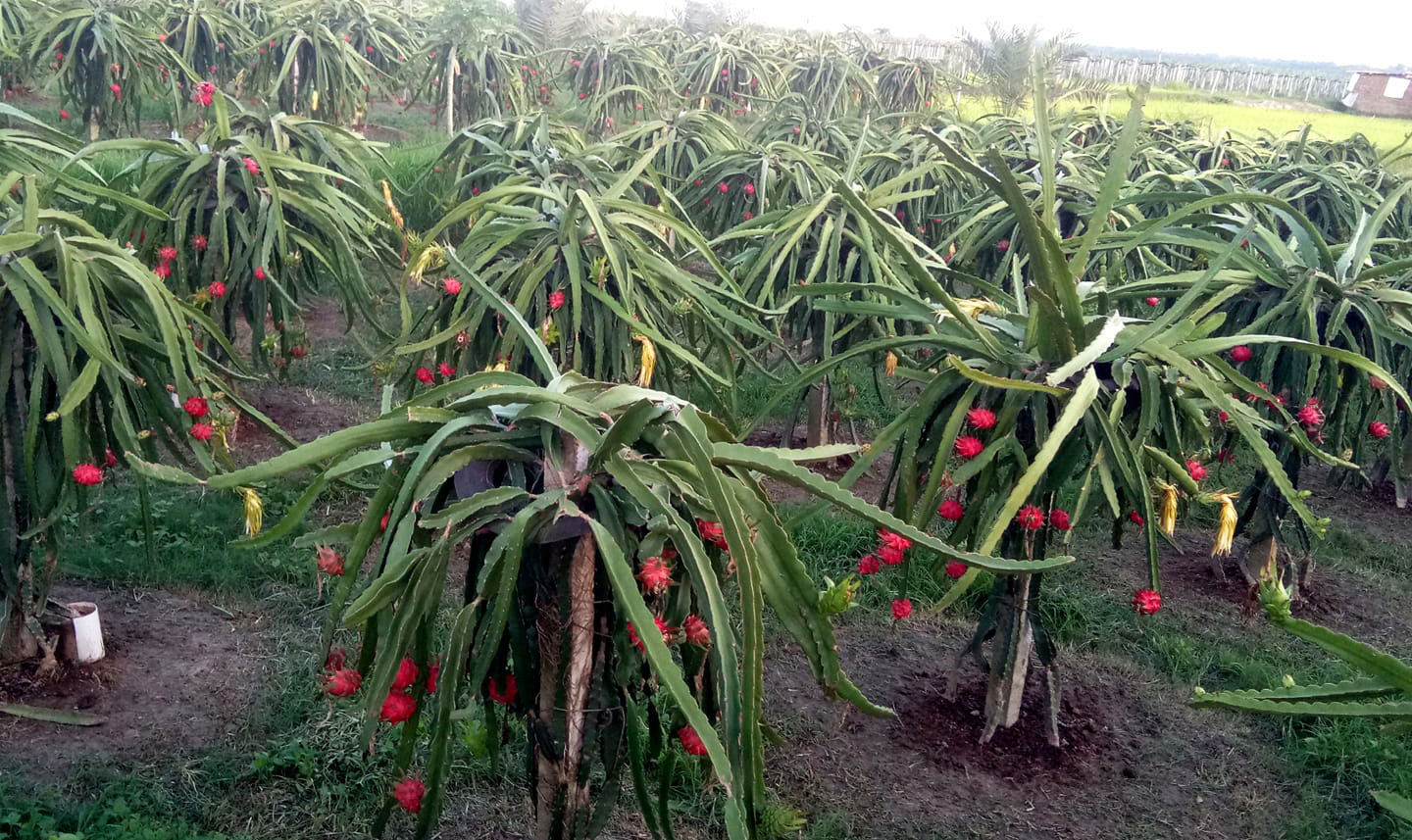
By Dr Aynal Haque
RAJSHAHI, Nov 18, 2021 (BSS) - Dragon farming has opened up fortunes of
many of the farmers as the cash crop is being judged as lucrative compared to
other ones in the region, including its vast Barind tract, for the last
couple of years.
Commercial farming of dragon fruit, a cactus species fruit, originally from
Central America, South America, and nowadays common in Southeast Asia and
China is gaining popularity in the region gradually.
Shafiul Islam Mukta, a resident of Godagari Upazila, said he has developed
three dragon orchards on 52 bigha of land in Gogram and Matikata areas.
He earned Taka 27 lakh last year and has also sold a dragon at Taka 200 to
400 per piece based on size, quality and colour in this season.
Relating to the production cost he said around Taka 2.60 lakh is required
for dragon farming in one bigha of land.
Asadul Islam Helal has exposed himself as a new successful entrepreneur by
involving in dragon fruit farming in Barind area.
A farmer of Bidirpur village under Godagari Upazila, Helal had planted
some dragon seedlings being inspired with his long lasting hobby around six
years back.
Later, he started farming of dragon, a delicious and high-valued but non-
conventional fruit in the region, on four acres of land in 2019 commercially.
"I have to spend around Taka nine lakh for the farming on each acre of
land," said Helal while talking to BSS on Wednesday, adding, around one and
half years time is needed to get fruit since the planting of seedlings.
During the summer season, fruits are harvested from June to November. "I
have already harvested and sold dragon fruits valued around Taka 16 lakh
during the current season," said Helal with a smiling face.
Currently, he has become a job-provider after leaving his institutional job
earlier.
Many other enthusiastic farmers like Mukta and Helal have developed
themselves as successful entrepreneurs through the dragon farming in the
Barind area.
Thereby, commercial farming of dragon fruit has started gaining popularity
in the Barind area after the best uses of its suitable climate condition and
topography for the last couple of years, said Jahangir Alam Khan, Director of
Integrated Water Resource Management (IWRM) Project.
Many of the entrepreneurs have set up dragon orchards and are doing
successful business in different areas of the dried region.
On behalf of the IWRM project, various forms of cost-effective irrigation
technologies like drip irrigation, fertigation and alternate furrow
irrigation are being promoted in the dragon farming in the drought-prone
Barind area in order to reduce the gradually mounting cost for irrigation
besides boosting soil productivity.
Dragon fruit is suitable for everyone to eat. Flesh and seeds are edible
parts and they are eaten altogether. It supplies fiber which is digestive and
helpful for a healthy liver. The rest of the fruit contains carbohydrates and
water.
It has mild sweet tastes and is especially low in calories, said Dr
Khalilur Rahman, a professor of the department of internal medicine in
Rajshahi Medical College Hospital, adding the seeds are digested only if
chewed. The flavonoids in dragon fruit lower the risk of heart disease and
high blood pressure.
It also reduces oxidative stress and artery stiffness as found in animal
studies and therefore is thought to prevent complications associated with
diabetes.
The high antioxidant levels lower the risk of many types of cancer, Dr
Rahman elaborated.
Sirajul Islam, Additional Director of Department of Agricultural Extension
(DAE), said the dragon fruit has been cultivated on more than 260 bighas of
land only in the Barind area.
Looks like a cactus, each dragon tree lasts for 20-30 years and gives 20-
25 fruits each season. Though the fruit is new in the country, there is a
demand for the fruit among people, he added.